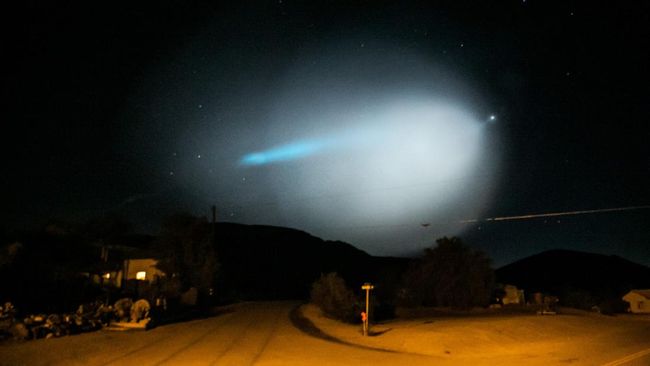Total change of atmosphere at the NYU Skirball Center with the collective (LA)HORDE who caused a sensation with the first presentation to the New York public of Room with a View. Created with the artist Rone in 2020 at the Théâtre du Châtelet, this is the first choreographic work of the collective with the Ballet national de Marseille, bringing together twenty-five dancers of sixteen different nationalities. A feeling of the end of the world invades the scene, which looks like a deserted quarry. Make way for a youth who has lost all illusion, for an anger resulting in raw violence. As conductor, the composer and musician Rone manipulates his machines and distills a haunting sound which rises to a crescendo throughout, beating time in front of the group of dancers who seem possessed in turn.
The coronation of spring by Pina Bausch recreated with dancers from all over Africa.
© Maarten Vanden Abeele
Launched in 2020 but slowed down by Covid, the festival Dance Reflections by Van Cleef & Arpels finally materialized in March 2022 with its first edition inaugurated in London. If the history that links the House to the world of dance dates back to the 1920s in Paris, this attachment was strengthened when Claude Arpels met the famous choreographer George Balanchine, co-founder of the New York City Ballet, in the 1950s. Their artistic complicity gives rise to Balanchine’s ballet Jewelspresented in New York in April 1967. This first edition, initiated in October 2023 in New York, is an opportunity for Van Cleef & Arpels to revive its own heritage in the United States.
5 questions to Serge Laurent, Director of Dance and Culture Programs at Van Cleef & Arpels
How was the festival born?
We are talking about a festival but the idea was first to support contemporary dance. From my experience as a programmer, I knew very well what the needs of contemporary dance are today. So we said to ourselves that we would first support dance companies for their creation. Financial support which is accompanied by an artistic choice, since I was contacted to lead artistic direction but as artistic director, we also make a financial commitment to the artists. The idea was first of all to support creation, because we realize today that even if in France we are well endowed, unfortunately, the means for production have been greatly reduced within the institutions. Obviously, it was not a question of replacing the institution, but of supporting creation. Secondly, I realized through my experience that for works to have a real existence, they must be seen, they must be disseminated, they must meet the public. Here too, many artists are not sufficiently distributed, due to lack of resources. We therefore decided to support a certain number of institutions around the world to help them present these artists. The first objective of this program was really to support creation and institutions for dissemination. This is how we created this network which today has around 45 institutions in almost 15 countries around the world. The idea is to circulate pieces that we have supported in creation. Today we have around twenty coins circulating in this network. We then said to ourselves that this initiative deserved to be given visibility by creating moments that showcase our choices. This is how the festival was born.
After London last year and New York this year, which are the next cities where the festival will travel?
In 2020, we launched a sponsorship initiative in favor of dance (companies and institutions) but we had to postpone the festival several times due to Covid. The first edition of the festival was therefore held in London in March 2022. Then, in October 2022, we set up a small festival in Los Angeles in partnership with the LA Dance Project, Benjamin Millepied’s company, and MOCA (The Museum of Contemporary Art). Then, in May, we organized an edition in Hong Kong. Today we are in New York and the next edition will be held in Japan, in Tokyo and Kyoto, in October 2024. The idea is that this festival does not take place in a city, but that it It is a traveling festival, which draws on the local environment. For example, London is an interesting city because it is located in Europe geographically and yet the English aesthetic is different from those of its European neighbors. The English have their own taste and it amused me to arrive in London with a French outlook. French dance is rather well received there. The idea of the festival is therefore to think about the place where we find ourselves. In London, as we started the festival, I wanted to retrace an overview of dance from the 1970s to the present day. It was very ambitious, there were 17 shows and we were going through a history of contemporary dance which is quite recent. In Hong Kong, there is an exterior/interior life and it amused me to show the dance both in dedicated places, but also outside. And then in a city where there is not a very strong contemporary dance culture, it is also a way of reaching different audiences. This is why I always try to show dance in a public place or in a museum. Diversifying locations is a way to reach different audiences. In Japan, I want to develop more workshops, both for amateurs and professionals.
Can you tell me more about the three values that underpin the festival?
It is creation, transmission and education that guide all the choices we make. Creation is pretty obvious. Transmission is less so, because a festival that mixes works from the past and new creations is not done very often. As a general rule, we focus either on very contemporary things, or on more classic things, because we compartmentalize the audiences a little. But our idea is really to mix, even if some are a little lost but that’s not a big deal. What I ultimately advocate is a holistic and historical vision of dance. Let us witness its evolution, let us look at contemporary dance with reference to the past. It is a mistake to forget to put into perspective the fact that contemporary art is the result and not the end. It is the result of an evolution. […] In each era, artists invent new codes, a language, with the desire to express themselves differently. It’s not provocation, it’s a natural dynamic. Just as everything else in society evolves, so does art. There, the festival begins with Dance, by Lucinda Childs, a play from 1979, and closes with The Rite of Spring, by Pina Bausch, which dates from 1975. Between the two, there are lots of things, and I hope that the public will be sensitive to this idea that the contemporary is only the result of an evolution. We invite people to witness something, and then they have the choice to like it or not to like it. Regarding education, for example, we support the École des Sables in Dakar, open to African dancers, with the launch of a three-year program and a scholarship offered to students. It’s a bit like a nursery. We also support certain institutions, notably the Autumn Festival, which has a cycle with schools. And we are going to further develop this education part in London with an associated educational component both for professionals and for amateurs, in order to open up views.
How is the choice of works made?
My job is to go and see. There are two things: the loyalty of artists – it is very important to follow the evolution of an artist, of a work – and the need to follow other languages. I met (LA)HORDE only two years ago. The work of this collective is very different from that of Gisèle Vienne or Lucinda Childs. Putting them together, for me, is a curation, it’s like hanging an exhibition. We think about the composition, so that it makes sense, so that there can be a discourse behind it. What I like is to bring the works together, to see what they end up with. From there, there is always a story that is built, it’s magical. I will instead turn to works that surprise me. I like to feel like I’m living in a moment where things are changing and to get the audience to observe something and wonder about what they saw. It is often these shows that he remembers the most. As a mediator between artists and the public, for me, it’s a win.
Some shows mix several dance styles like voguing, is this something new?
Contemporary dance has opened the way to all forms of expression, there are no trends, it excludes nothing. For years, dance was reserved for a form of academicism: there was classical dance, neoclassical dance, contemporary dance… It had become a sort of institutional niche. From the 1990s, there was a movement where all dances had the right to be included. Voguing is one of those dances that were previously part of a very closed community, and contemporary dance has welcomed them. The program of the Ballet de Marseille, which offers historical pieces by Lucinda Childs, Edge of Content by (LA)HORDE and a voguing piece, invites the public to witness what dance is today. This is what excites me. My job is to create bridges, what I can show is really very broad.
Find out more about the festival program Dance Reflections New York.
2023-10-30 10:19:16
#Dance #Reflections #Van #Cleef #Arpels #festival #York


